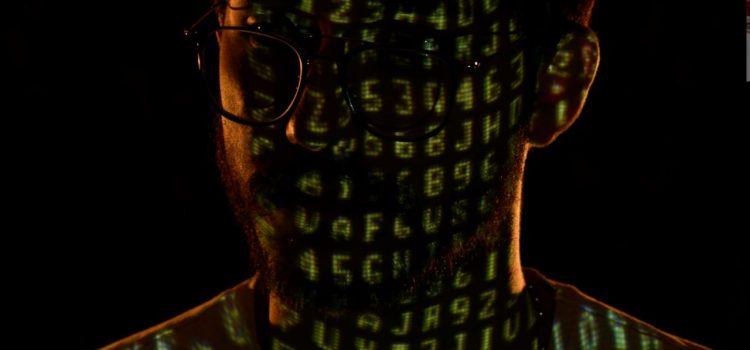

This article is an excerpt from the Shortform book guide to "The Man Who Mistook His Wife for a Hat" by Oliver Sacks. Shortform has the world's best summaries and analyses of books you should be reading.
Like this article? Sign up for a free trial here .
What was so extraordinary about the savant twins Michael and John? What did the twins teach Oliver Sacks about the brain’s hidden abilities?
In the book The Man Who Mistook His Wife for a Hat, psychologist Oliver Sacks talks about his experience with savant twins Michael and John. These twins had some amazing abilities surrounding numbers and even seemed to communicate with each other using them.
Here is the story of the savant twins, Michael and John, as told by Oliver Sacks.
The Savant Twins Michael and John
One of Sacks’ most interesting windows into the concrete world of the intellectually disabled was his work with a pair of autistic savant twins named Michael and John. The twins had earned some level of national fame for their television appearances, in which they demonstrated their ability to immediately tell the day of the week for any date, no matter how far into the past or into the future. They also were able to perfectly recite 300-figure long number strings.
When asked to retrieve a date or a number sequence, their eyes would appear to “scan,” as if they were seeing and retrieving data. It dawned on Sacks—the twins were not human calculators; instead, they “saw” the dates and events, as if they were splashed across a vast canvas in their minds. Numerical concepts were completely concrete for them, as real and physical as anything in the outside world.
Michael and John, however, were unable to perform simple operations like addition and subtraction and had absolutely no comprehension of multiplication or division. These concepts were too abstract for them to process.
Savoring Numbers
While visiting the twins one day, Sacks accidentally knocked a pack of matches on the floor, causing its contents to spill out. The twins immediately declared, “111.” When Sacks picked up the matches, he saw that there had been precisely 111 matches on the floor. Moreover, they murmured “37, 37, 37” after they identified the 111 matches—the prime factors of 111.
In speaking with Michael and John, Sacks realized that they hadn’t done any sort of counting or calculation. They simply “saw” 111, as if that number had certain unique qualities or properties (Sacks labeled it “111-ness”) that made it instantly recognizable. It was akin to someone who has perfect pitch, the ability to identify and reproduce any musical note without using a reference.
This provided an important insight into how the twins’ minds worked. On another occasion, Sacks observed the pair sitting quietly and contemplatively as they recited six-figure numbers to each other. They would name seemingly random numbers like “100,153” or “999,773,” to one another and smile contentedly as they “savored” the numbers, appearing to appreciate each for its own unique qualities—almost as if they were appreciating some piece of visual art or a nature scene. They found serenity and harmony in this ritual, an almost religious reverence for the beauty of numbers.
Prime Numbers
While trying to discover the significance of the numbers the twins were savoring, Sacks consulted a mathematical book and discovered that all of the six-figure numbers they were passing back and forth were prime numbers (divisible only by one and themselves).
This was remarkable—the twins had no understanding of division or multiplication, so it was impossible for them to do the calculations necessary to determine what a prime was (and there is no simple method or formula for calculating primes). They just “saw” primes in their minds and recognized them intuitively. It also explained why they said “37, 37, 37” when they saw the 111 matches on the floor—37, of course, being a prime number.
Sacks decided to join their prime number game and (cheating by using a book as reference) ventured his own eight-figure prime number. The twins contemplated it and, after some time, smiled in satisfaction. By some unknown process, they evaluated it as a prime number. Over the course of the session, the twins expanded their game, reaching new prime numbers going up to twenty figures.
It was impossible to discern the true workings of their ritual, but it seemed to Sacks as if the twins inhabited a rich and detailed universe of numbers, and could identify and retrieve primes on sight—as if they were walking through an endless meadow and plucking only a particular kind of flower.
“Socially Acceptable”
Sadly, the hospital where Michael and John lived decided to separate them from one another, in the hopes of breaking them out of their isolated world and making them “socially acceptable.” To be sure, there were some positive results—they could perform menial jobs, take the bus, and maintain a decent outward appearance.
But the separation robbed them of their numerical communion and ritual, which was clearly the main joy and purpose of their lives. Their skills at identifying and appreciating prime numbers rapidly deteriorated. Sacks wondered if they really needed to be “cured.” If they were able to appreciate beauty in numbers and derive meaning and purpose from this pursuit, were they really damaged or defective? Sacks lamented their situation, which left the twins with all their deficits and none of their gifts.

———End of Preview———
Like what you just read? Read the rest of the world's best book summary and analysis of Oliver Sacks's "The Man Who Mistook His Wife for a Hat" at Shortform .
Here's what you'll find in our full The Man Who Mistook His Wife for a Hat summary :
- Neurologist Oliver Sacks' case studies on patients with neurological impairments
- The remarkable complexity of the human brain and its extraordinary capacity to adapt
- How Sacks' work with his patients shows the pitfalls of traditional thinking about neurological disorders






